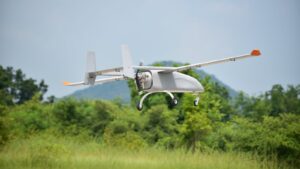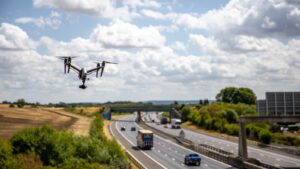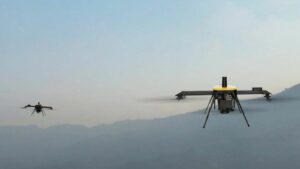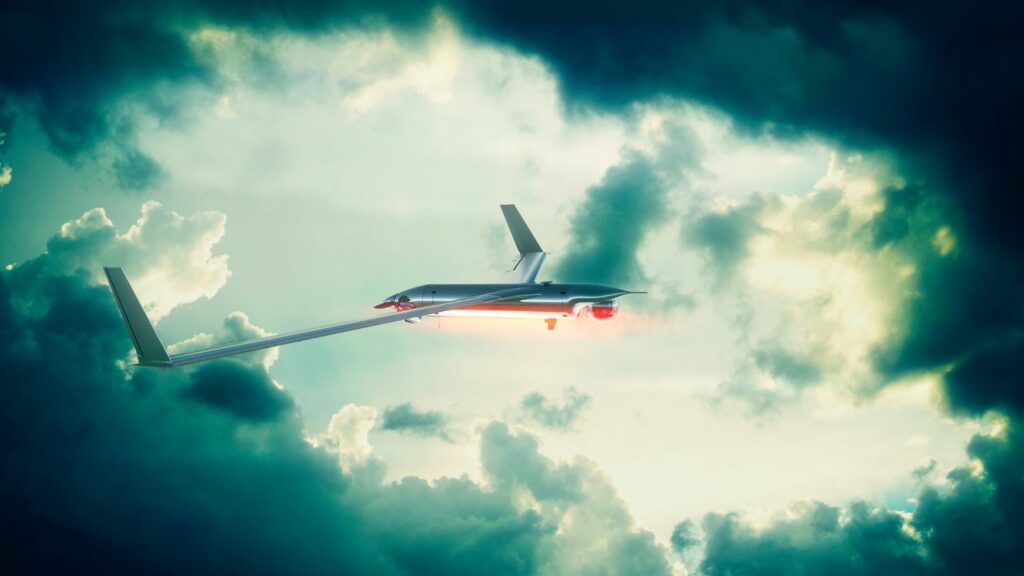Imagine a world where drones don’t just deliver packages, but also perform complex tasks like firefighting, wildlife conservation, and even medical aid. Welcome to the future of unmanned aircraft innovations. This industry’s rapid development is transforming the way we perceive and interact with technology.
Unmanned Aircraft Innovations
Plunge into the realm of game-changing technology with the pivotal characters and institutes at the forefront of unmanned aircraft innovations. Herein lies an exploration of these key drivers and the profound impact of their breakthroughs.
Notable Individuals and Organizations
 The industry brims with innovators, among them enterprises and visionaries alike who’ve perfected unmanned aircraft technology. Meet Elon Musk’s brainchild, SpaceX, a commercial spaceflight company that’s made major strides in unmanned spacecraft. DJI Innovations, a Chinese tech company, takes the lead in the consumer drone market, attributing success to its constant innovative overhaul.
The industry brims with innovators, among them enterprises and visionaries alike who’ve perfected unmanned aircraft technology. Meet Elon Musk’s brainchild, SpaceX, a commercial spaceflight company that’s made major strides in unmanned spacecraft. DJI Innovations, a Chinese tech company, takes the lead in the consumer drone market, attributing success to its constant innovative overhaul.
Venture further into the minds of distinguished individuals who’ve significantly impacted this space. Chris Anderson, former Wired magazine editor and now the founder of 3D Robotics, attests his influence on software and hardware innovations in this realm. Jordi Munoz, co-founder with Anderson, hails as a pioneer in DIY drones, democratising the use of unmanned aircraft for the masses.
Impact of Their Innovations
Their innovations stand as paramount contributors to the industrial revolution; they have, and continue to redraw the narrative of what unmanned aircraft can accomplish. Thanks to SpaceX, reusable rockets aren’t just a theoretical concept but a game-changing reality, reducing space mission costs astronomically.
 DJI Innovations’ continual upgrade of drone technology has elevated the industry’s standards, influencing everything from the drone’s aerodynamics to software capabilities. These advances have catalyzed the use of drones in multiple sectors: from real estate to cinematography, agriculture to disaster management.
DJI Innovations’ continual upgrade of drone technology has elevated the industry’s standards, influencing everything from the drone’s aerodynamics to software capabilities. These advances have catalyzed the use of drones in multiple sectors: from real estate to cinematography, agriculture to disaster management.
Equally impressive, 3D Robotics and co-founders Chris Anderson and Jordi Munoz shattered the entry barriers to drone technology. With their DIY drones, access to this high-end technology isn’t a privilege of a selective few, rather a reality for many, reflecting a true epoch of democratization in the unmanned aircraft industry.
Implications of Unmanned Aircraft Innovations
Influence on Legislation and Regulation
The evolution of Unmanned Aircraft Systems (UAS) is immensely influencing governmental policies. Countries all over the globe grapple with issues concerning privacy, safety, and environmental conservation. For instance, the Federal Aviation Administration (FAA) in the United States continues to adapt and propose new regulations, such as the Remote ID rule, aimed at enhancing the accountability of drone operators, thus achieving better integration of drones into the national airspace.
In addition, the issues of drone surveillance and data collection hatch fresh concerns about privacy rights. There’s an ongoing discourse among governments, private entities, and civilians over how to strike a critical balance between technological advancement and the preservation of privacy. Unmanned aircraft innovations are, therefore, serving as catalysts for legislative and regulatory changes worldwide.
Future Predictions on Unmanned Aircraft Use
 Taking into account the trajectory of technological advancement, its effects on unmanned aircraft innovations use are guaranteed to be transformative. Industry forecasts predict that drones will become an integral part of numerous sectors. For example, in logistics and supply chain management, drones can substantially increase delivery speed while minimizing carbon footprints. In the health sector, unmanned aircraft can play a crucial role in medical emergencies, delivering vital supplies or facilitating telemedicine in remote areas.
Taking into account the trajectory of technological advancement, its effects on unmanned aircraft innovations use are guaranteed to be transformative. Industry forecasts predict that drones will become an integral part of numerous sectors. For example, in logistics and supply chain management, drones can substantially increase delivery speed while minimizing carbon footprints. In the health sector, unmanned aircraft can play a crucial role in medical emergencies, delivering vital supplies or facilitating telemedicine in remote areas.
In terms of environmental management, drones fitted with advanced sensors could aid in wildlife conservation, providing valuable data about ecosystem health without disturbing the natural habitat. Similarly, in the realm of disaster management, unmanned aircraft can offer invaluable aid during rescue missions, providing real-time aerial views and helping locate victims in hard-to-reach areas. To sum up, the rise of unmanned aircraft paves the way for a future wherein drones augment everyday life, interfacing society with technology in unprecedented ways.
High-Tech Devices
Unmanned aircraft innovations are not just reshaping our skies, they’re transforming our world. As drones evolve from simple delivery tools to sophisticated, autonomous machines, they’re finding their place in diverse fields. From firefighting to wildlife conservation, medical aid to disaster management, the potential of these high-tech devices is vast.



